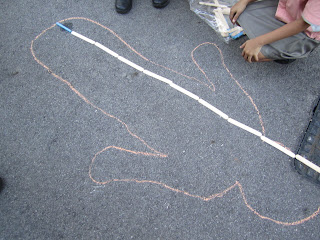A graph is a pictorial representation of data. In Primary 1, pupils have learnt picture graphs based on one-to-one representation (i.e. using a symbol to represent 1 object).
In Primary 2, pupils learn to read, interpret and draw picture graphs with scales, with each symbol could represent more than 2 objects.
Pupils are lead to see the need for using a scale when the numbers are large. Pupils are also exposed in both horizontal and vertical forms of picture graphs.
The data presented in the graphs should be related to students‟ experiences and interests, e.g. their favourite flavor of ice cream, favourite sport etc.
There will not be any use of incomplete symbol / picture at their level.
LEARNING OUTCOMES
*Make picture graphs with scales
*Read and interpret picture graphs with scales
*Solve problems using information presented in picture graphs












.JPG)




.JPG)
















